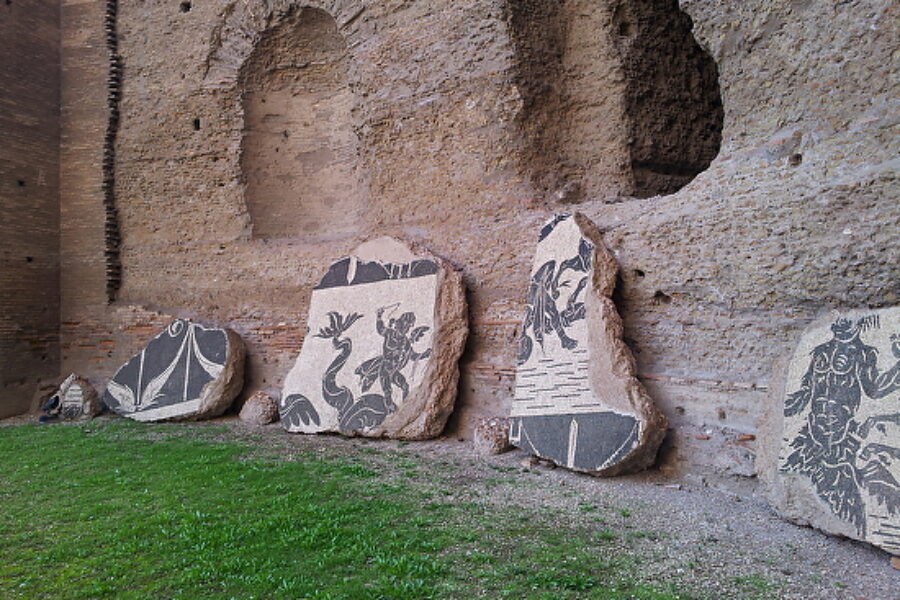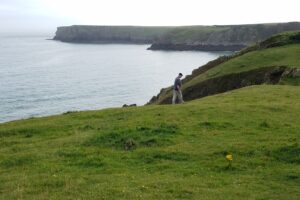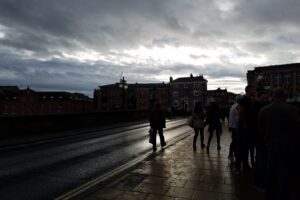Walking up the steep cobblestone path, climbing our first of Rome’s Seven Hills, I wonder at my decision for today’s adventure. However, these days my legs only know one way to go — up!
Cresting the top of the hill, making our way to the edge of the park, Rome lies before us in all her splendor — clean and perfect from afar — not a sign of the chaos that reigns below.



Mike’s ears, better than most, pick up on a tour guide’s spiel; it is a private tour, a total of two. He follows them into a long arcade that leads into the Basilica di S. Sabina. He continues listening, absorbing the facts, relating them to me in snippets. I wander.
We leave the Aventine Hill heading in the direction of Terme di Caracalla, weaving our way through the beautiful, pristine suburbs of Rome.
Arriving at a too busy street — cars, construction, restaurants, trams — we follow our nose, consulting a map when we must. We turn right, walk up an incline, and I see ruins outlined against the clear blue sky.
“Look,” I say, “there they are…now we just have to figure out how to get there.” That is the hard part.


The baths are old — actually, they are ancient — started in 212 AD. The complex is huge. I look at Mike and say, “It must have been one hell of a big swimming pool.” But of course, there is more to it than that. For the next two hours, we wander and sit and linger and look.
The Baths of Caracalla

Construction of the Baths of Caracalla started in 212 AD and the complex was completed five years later.
The ritual of bathing was a long process, starting with a hot bath in the calidarium. Next up was the lukewarm tepidarium, followed by the cold frigidarium. Then followed a swim in the natatio, an open-air swimming pool.
The Baths of Caracalla was more than a mere bathing house; it was actually a multifunctional leisure center and also housed gymnasiums, libraries, gardens, art galleries, restaurants, and even brothels. The Baths of Caracalla was known for its rich interior which featured marble seats, mosaic-covered walls, and floors as well as fountains and statues
The Emperor Carcalla
The Roman emperor known as Caracalla was born April 4, 188 in Gaul. Caracalla followed in the ancient Roman tradition of fratricide by killing his brother Geta in 212 shortly after they both succeeded their father, Septimius Severus, to the imperial throne in 211. Caracalla staged the assassination of his brother so that his brother died in his mother Julia Domna’s arms. He then carried out a blood bath, killing as many as 20,000 supporters of Geta.
Caracalla bought the affection of the soldiers but was himself assassinated by his praetorian prefect Macrinus on April 8, 217.








Leave a Reply
Your email is safe with us.